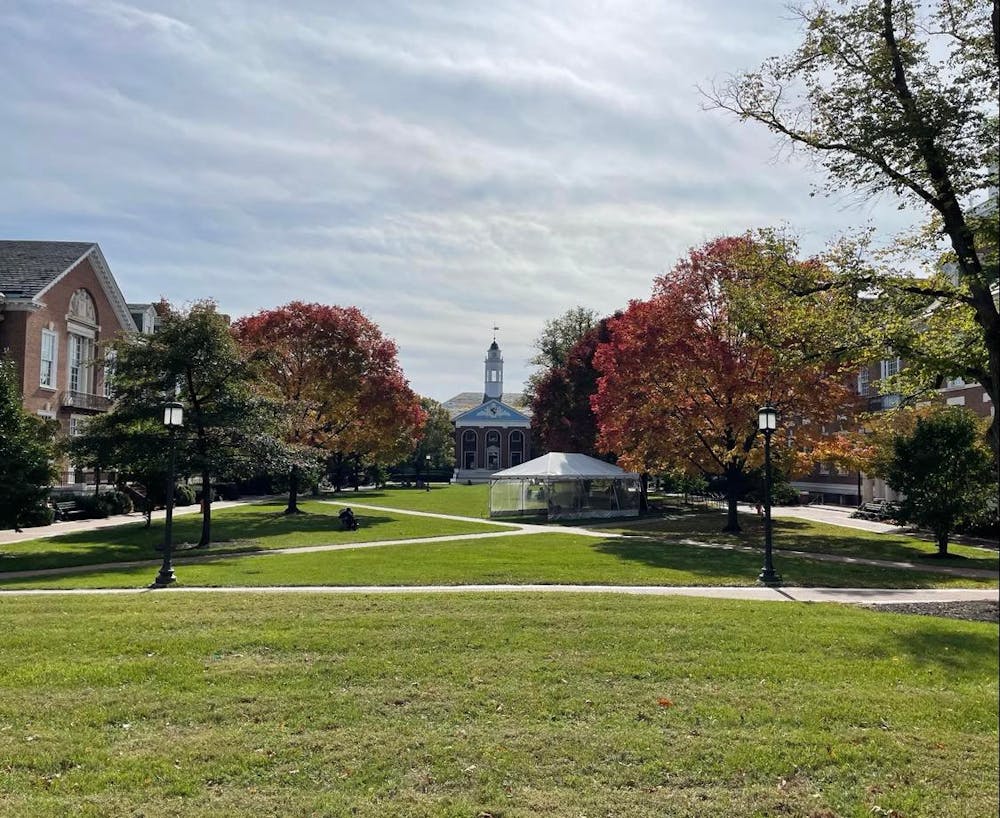Amid multiple policy changes following the pandemic, the University removed the mid-semester fall break from the fall 2021 calendar. The University has offered a fall break every year since 2010. In interviews with The News-Letter, students shared how the removal of a fall break has impacted them.
Junior Angel Garcia feels that a break allows students to adjust to different stages of their college career.
“Fall break gives [newer students] a chance to catch their breath and process everything that they’re going through,” he said. “For the older students, it gives them a chance to not burn out since it’s already been a while that we’ve been [in school]. We can use the extra time for ourselves.”
Second-year graduate student Yared Haile agreed, emphasizing that a break would have given him time to catch up on ordinary tasks.
“I probably would have organized the household, or caught up on groceries — just simple things that get missed during the two-day weekend, overtaken by studying or finishing assignments,” he said. “It allows us to reset, catch up and refresh for the next few weeks.”
In 2020, the University announced plans to unify academic calendars across the different Hopkins campuses. However, students at the Peabody Institute had a fall break this year, leading many to question its removal for Homewood Campus.
Haile emphasized the difficulty of having different schedules between campuses.
“A lot of the departments are split between different schedules, so having one class with this schedule and another class with this schedule is really hard to keep track of,” he said.
In an email to The News-Letter, Vice President for Communications Andrew Green explained the reasoning behind the University’s decision to exclude a mid-semester break from the academic calendar.
“This year, the move to cut October break days in the Homewood calendar and instead extend reading days eliminated the need for instruction on a certain day of the week to follow a schedule for another day in the week,” he wrote.
Garcia argued that these extra days are not comparable to a mid-semester break.
“It feels like they’re taking away time we have for ourselves and making it into more work,” Garcia said. “Personally, I would rather they [have] kept [fall break].”
Second-year graduate student Yotaro Sueoka pointed to how the pandemic has made it especially hard for first and second-year students to adjust to the new college environment. In fact, more college students have reported feeling burnt out or struggling with mental health issues since the beginning of the pandemic.
Though more frequent in-person interactions this semester have contributed positively to his mental health, Sueoka also stressed the importance of resetting.
“There is a lot more in-person interaction and lectures, so I feel more excited about interacting with people, like actually meeting my cohort, but there is definitely a sense of getting tired and needing a break, especially around this time," he said.
Students also reflected on the exhaustion they experienced last spring following the University’s decision to stagger spring break days rather than give students a full week off. Some expressed their concerns about a repeat next semester.
“A lot of the decisions [Hopkins has] made in the past have just been at the students’ expense,” Garcia said. “[The alternative spring break] made it impossible to actually take a break. The days essentially just ended up being transformed into more work.”
Freshman Sylvain Raj argued that the decision to remove fall break does not necessarily represent the University’s stance on student mental health. He cited the free services at the Counseling Center and A Place to Talk (APTT), a student-led organization supported by the Counseling Center, as measures from the University to help ensure students stay mentally well.
Garcia, on the other hand, feels that the University could do more to support mental health on campus.
“It’s not necessarily that there aren't enough resources,” he said. “There is just not enough of a connection between those resources and the students. Sometimes it feels like we don’t really know what’s really available.”
Green noted that the administration wants to hear from students.
“We are interested in feedback and look forward to continuing to work with students and faculty to optimize the academic calendar,” he wrote.
The Student Government Association has pushed for the implementation of one or more Mental Health Days in response to the removal of fall break. Currently, no other breaks are affected by the new University policies; spring break for spring 2022 will give students an entire week off.





